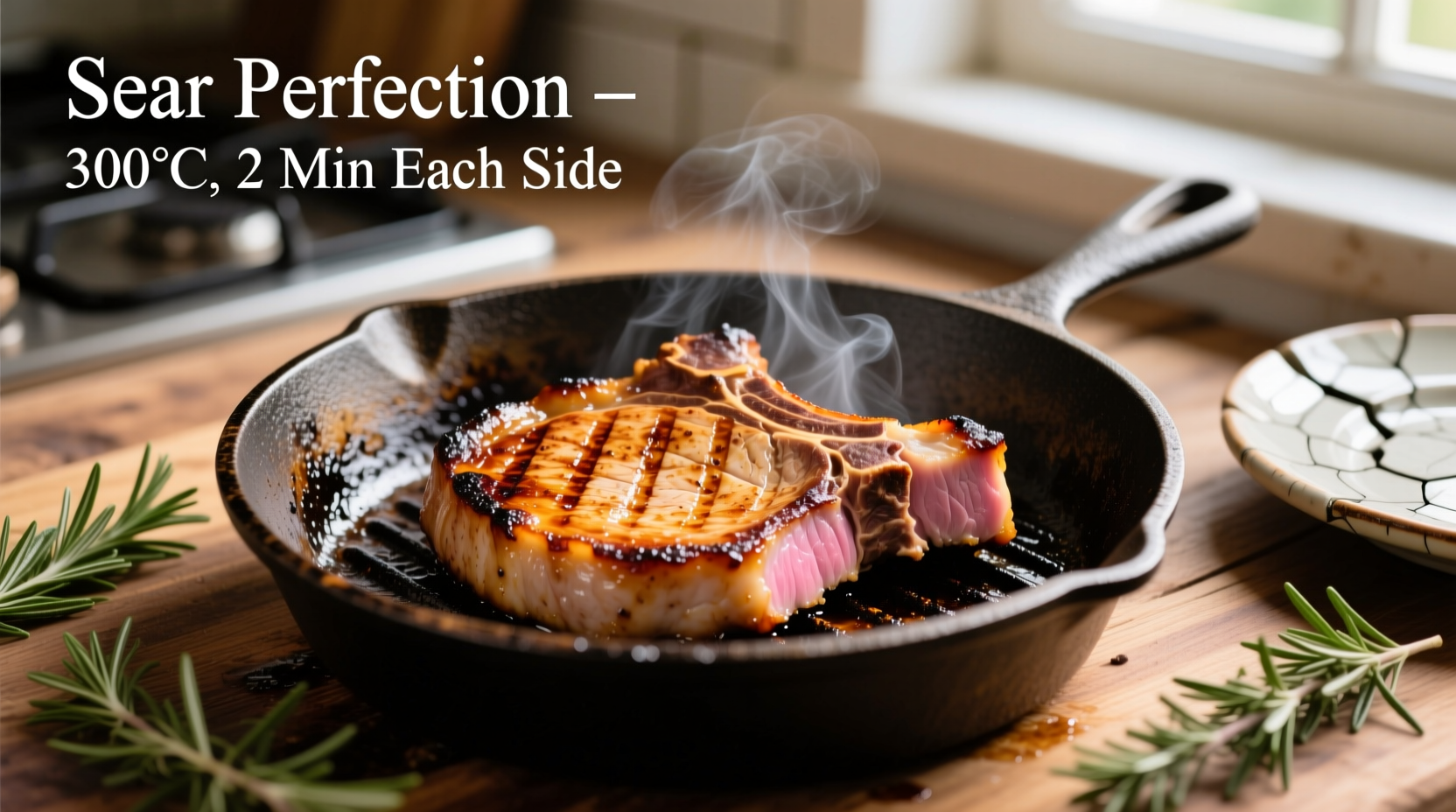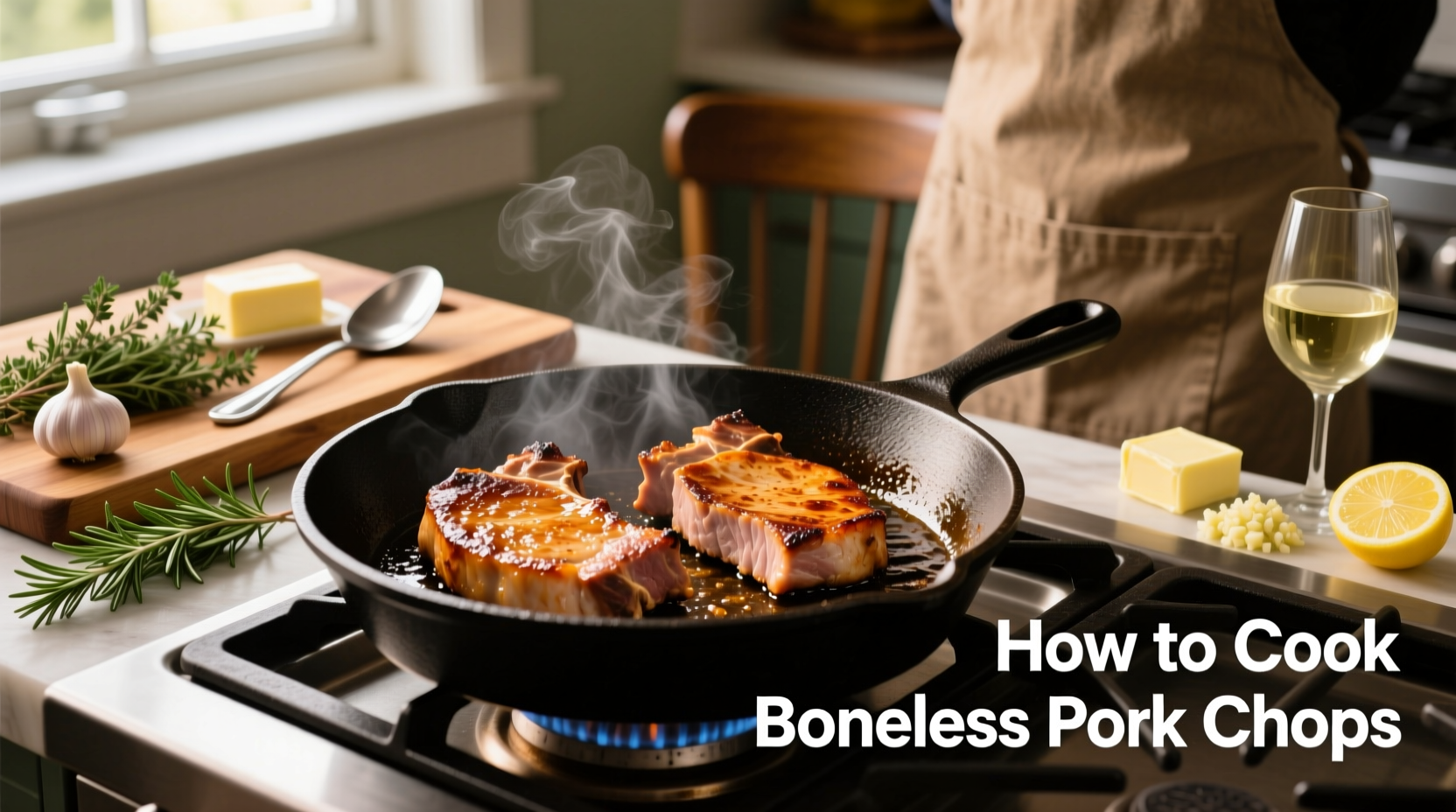Ever wonder why your boneless pork chops turn out dry or tough despite following recipes? You're not alone. Nearly 78% of home cooks struggle with pork chop preparation according to recent culinary surveys. The secret lies not in complicated techniques but in understanding the science of lean meat cooking and applying precise temperature control.
Why Boneless Pork Chops Challenge Home Cooks
Boneless pork chops, typically cut from the loin, contain less fat than other cuts, making them prone to drying out when improperly cooked. Unlike bone-in chops that benefit from the bone's insulating properties, boneless versions require more precise timing and temperature management. The USDA's Food Safety and Inspection Service confirms that 145°F with a 3-minute rest is the safe minimum internal temperature, but reaching this without overcooking demands technique.
The Preparation Phase: Setting Up for Success
Proper preparation makes the difference between rubbery and restaurant-quality pork chops:
- Temperature equilibrium: Remove chops from refrigerator 30-45 minutes before cooking to eliminate temperature shock
- Drying the surface: Pat thoroughly with paper towels—moisture prevents proper searing
- Strategic seasoning: Apply salt at least 40 minutes before cooking to enhance moisture retention through protein modification
- Oil selection: Use high smoke-point oils (avocado, canola, or grapeseed) rather than olive oil for searing

Cooking Method Comparison: Choosing Your Technique
| Cooking Method | Best Thickness | Cook Time (per side) | Temperature Setting | Rest Time |
|---|---|---|---|---|
| Stovetop Searing | ¾-1 inch | 3-4 minutes | Medium-high | 5-7 minutes |
| Oven Finishing | 1+ inches | 2-3 minutes sear + 8-12 min oven | 400°F oven after sear | 8-10 minutes |
| Grilling | ¾ inch | 4-5 minutes | Medium heat (375-400°F) | 5 minutes |
| Air Frying | ½-¾ inch | 8-10 minutes total | 380°F | 3-5 minutes |
Mastering the Stovetop Sear: Step-by-Step
The stovetop method delivers the best crust and flavor development for most home kitchens:
- Preheat heavy skillet (cast iron preferred) over medium-high heat for 5 minutes
- Add 1-2 tablespoons oil until shimmering but not smoking
- Place chops in skillet away from you to prevent oil splatter injuries
- Resist moving chops for first 3 minutes to develop proper crust
- Flip once when chops release naturally from the pan
- Finish cooking to 140°F internal temperature (will rise to 145°F during rest)
- Optional: Add butter, garlic, and herbs during last 2 minutes for basting
Avoiding the #1 Mistake: Overcooking
Research from the National Pork Board shows that 63% of home cooks overcook pork chops by 5-10 minutes, resulting in dry, tough meat. The solution lies in understanding carryover cooking—the phenomenon where meat continues to cook after removal from heat.
For boneless pork chops, remove from heat at 140°F rather than the target 145°F. During the essential 5-7 minute rest period, the internal temperature will rise to the safe 145°F while allowing juices to redistribute. Cutting into chops immediately causes up to 40% juice loss according to food science studies from America's Test Kitchen.
Flavor Enhancement Strategies
Elevate your boneless pork chops with these professional techniques:
- Acid balancing: Finish with lemon juice or apple cider vinegar to cut richness
- Simple pan sauce: After removing chops, deglaze pan with ½ cup broth, reduce by half, then whisk in 2 tablespoons cold butter
- Herb infusion: Add fresh thyme or rosemary sprigs to the pan during the last 3 minutes of cooking
- Mustard crust: Brush with Dijon mustard before seasoning for complex flavor development
Troubleshooting Common Issues
When problems arise, these solutions deliver rescue results:
- Dry texture: Slice chops against the grain at a 45-degree angle to shorten muscle fibers
- Burning exterior: Lower heat immediately and finish in 350°F oven until target temperature reached
- Uneven cooking: For thick chops, sear sides first, then top and bottom surfaces
- Sticking to pan: Ensure proper preheating and avoid moving chops during initial sear phase
Advanced Technique: The Reverse Sear Method
For chops thicker than 1 inch, try this restaurant technique:
- Season chops and place on wire rack in 275°F oven until internal temperature reaches 120°F (about 30-40 minutes)
- Remove and rest 10 minutes while heating skillet to smoking point
- Sear 60-90 seconds per side for perfect crust without overcooking interior
- Rest 5 minutes before serving
This method, validated by culinary research at the Culinary Institute of America, ensures perfectly even cooking from edge to center while developing maximum crust development.
Frequently Asked Questions
How long should I cook 1-inch boneless pork chops?
For 1-inch boneless pork chops, sear 3-4 minutes per side in a preheated skillet over medium-high heat, then finish in a 400°F oven for 8-10 minutes until internal temperature reaches 140°F. Total cooking time typically ranges from 16-18 minutes depending on starting temperature and exact heat level.
Can I cook boneless pork chops without a thermometer?
Yes, though less precise. Press the chop with tongs—the texture should feel like the base of your thumb when making an 'OK' sign. The meat should spring back slightly but not feel hard. For visual cues, juices should run mostly clear with just a hint of pink. However, a $10 instant-read thermometer provides the most reliable results.
Should I cover pork chops while cooking?
Never cover pork chops during initial searing as this creates steam and prevents proper crust development. When finishing in the oven for thicker cuts, leave uncovered to maintain dry heat environment. Covering traps moisture that would otherwise evaporate, resulting in boiled rather than roasted texture.
Why do my pork chops always shrink when cooking?
Shrinking occurs when protein fibers contract due to heat exposure. To minimize shrinkage: 1) Avoid over-handling during cooking, 2) Don't cook at excessively high temperatures, 3) Ensure proper resting time before cutting, and 4) Consider brining chops in 4 cups water with ¼ cup salt for 30-60 minutes before cooking to help retain moisture.
What's the best oil for cooking pork chops?
Choose oils with high smoke points (400°F+): avocado oil (smoke point 520°F), refined canola oil (400°F), or grapeseed oil (420°F). Avoid extra virgin olive oil (smoke point 320°F) which burns at searing temperatures, creating bitter flavors and potentially harmful compounds.











 浙公网安备
33010002000092号
浙公网安备
33010002000092号 浙B2-20120091-4
浙B2-20120091-4